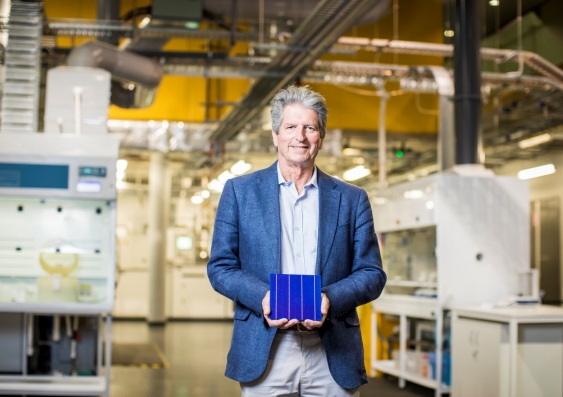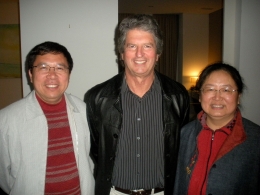Australian solar pioneers win world's top engineering prize
Researchers behind the revolutionary PERC solar cell have been awarded the 2023 Queen Elizabeth Prize for Engineering.
Researchers behind the revolutionary PERC solar cell have been awarded the 2023 Queen Elizabeth Prize for Engineering.

Four Australian solar researchers have been awarded the 2023 Queen Elizabeth Prize for Engineering (QEPrize). The group was recognised for its pioneering work at ª π⁄≤ ∆± Sydney to develop Passivated Emitter and Rear Cell (PERC) solar photovoltaic technology, which has underpinned the recent exponential growth in high performance, low-cost solar electricity.
The Prize, which has been called the ‚ÄòNobel for engineering‚Äô, is presented annually to engineers responsible for ground-breaking innovations that have been of global benefit to humanity. It is regarded as one of the world‚Äôs top academic awards rated by the IREG List of International Academic Awards and has a reputation score of 0.51 compared to a Nobel Prize. Sharing the 2023 Prize are Professor Martin Green from ª π⁄≤ ∆± Sydney, Professor Andrew Blakers from the Australian National University and solar entrepreneurs Dr Aihua Wang and Dr Jianhua Zhao.¬Ý
Celebrating its 10th year in 2023, the Prize announcement was made in London by Lord Browne of Madingley, Chairman of the QEPrize Foundation. Lord Browne said: “The QEPrize celebrates the engineers who time and time again solve the impossible and transform our world for the better. I believe that everything we do has to be oriented around the global energy transition so we can achieve net zero, for the planet and the people that live on it. PERC solar cell technology has been and will continue to be integral to this journey. I wholeheartedly congratulate Professors Green and Blakers, and Drs Wang and Zhao for their contribution to humanity.”
Read more:¬Ý
The 2023 Laureates greatly improved the energy conversion efficiency of commercially dominant silicon cells, by improving the quality of both the top and the rear surface of standard silicon solar cells.
When sunlight – in the form of particles called photons – enters a cell, it excites the electrons within the silicon. In this excited state, electrons can move through the cell, creating electric current. The improved surface of the PERC cell allows the electrons to maintain this excited state – or move freely – for longer, resulting in greater and more efficient energy generation.

Dr Jianhua Zhao, Professor Martin Green, Dr Aihua Wang. Photo: ª π⁄≤ ∆± Sydney
Profs Green and Blakers produced solar cells with 18 per cent efficiency at ª π⁄≤ ∆± in 1983, surpassing the 16.5 per cent recorded previously. Over the next two years, Profs Green and Blakers published cell results of 19 per cent and 20 per cent efficiency, subsequently achieving over 21 per cent efficiency in 1989 with Drs Wang and Zhao. Prof. Green theoretically determined the maximum achievable efficiency to be close to 30 per cent. He suggested the maximum practical limit of 25 per cent efficiency, with Drs Wang and Zhao leading the work which ultimately reached this goal in 1999.
Prof. Green‚Äôs lab at ª π⁄≤ ∆± held the global record for efficiency for 30 of the 40 years between 1983 and 2023.
Prof. Green said he was¬Ýhonoured to share the QEPrize with his three former PhD students, Prof. Blakers and Drs Wang and Zhao. ‚ÄúAs engineers, we are constantly striving to improve the world we live in. As the world feels the devastating impacts of our changin